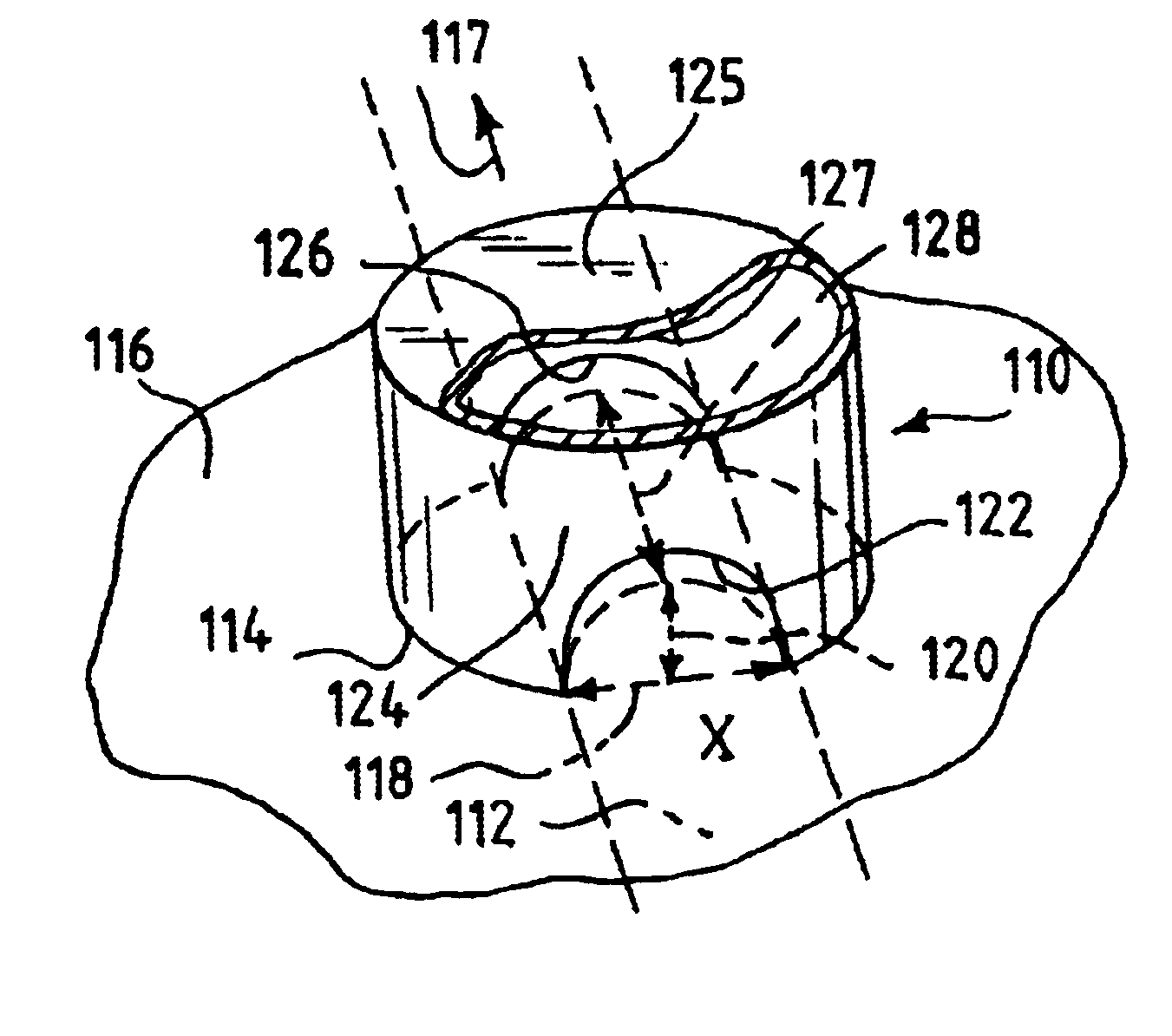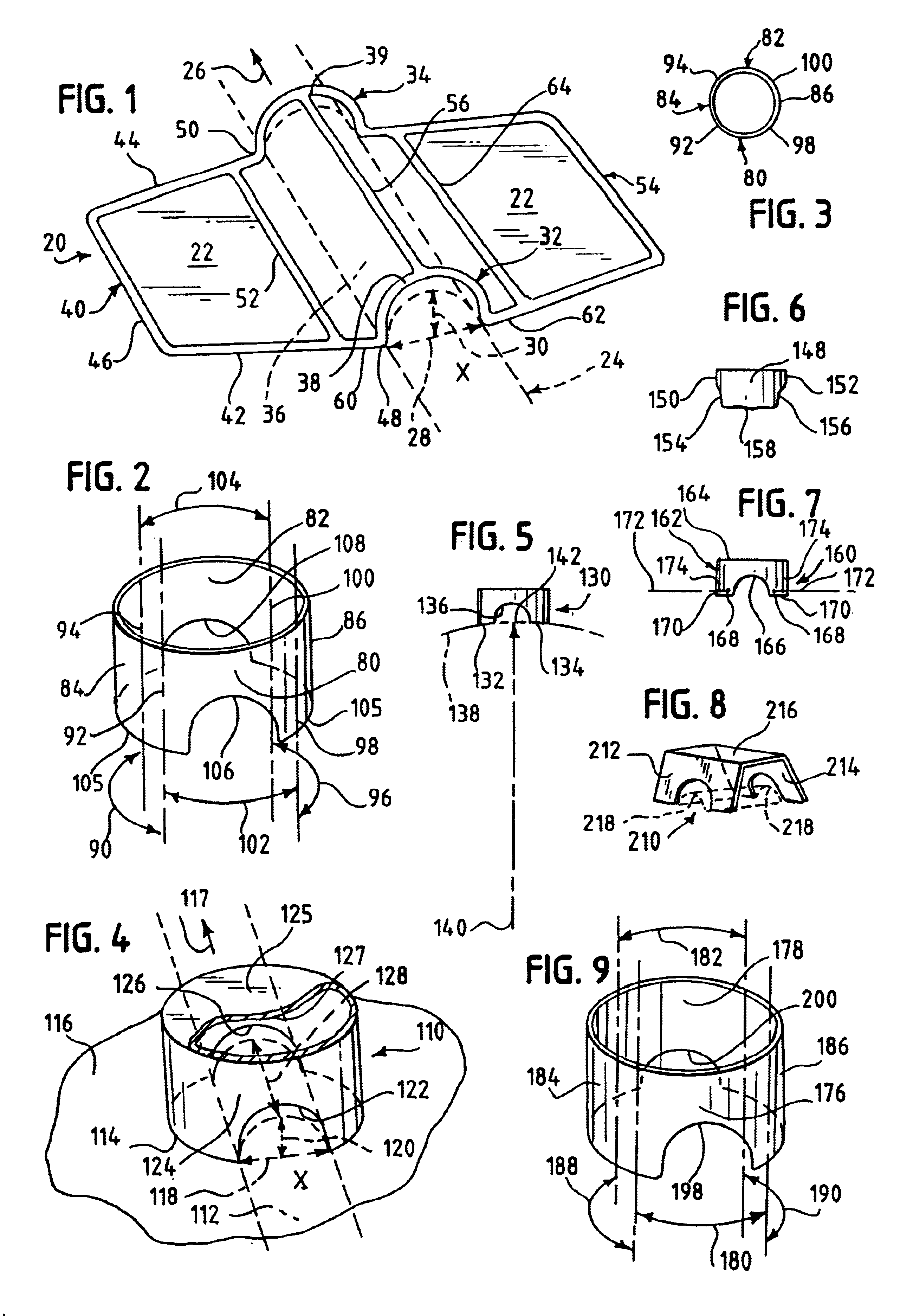Venipuncture assistor
a technology of venipuncture and assistor, which is applied in the direction of intravenous devices, etc., can solve the problems of increasing the chance of the operator getting a blood borne disease, difficulty in holding steady the vein, and difficulty in venipuncture, etc., and achieves the effect of convenient manufacture, immediate and effective use, and convenient handling and us
- Summary
- Abstract
- Description
- Claims
- Application Information
AI Technical Summary
Benefits of technology
Problems solved by technology
Method used
Image
Examples
Embodiment Construction
FIGS. 2 through 7 illustrate preferred embodiments of the device of this invention.
General Construction
FIGS. 2-4 show the general construction of one example of a preferred embodiment of the venipuncture assistor of this invention.
FIG. 2 is a perspective view of substantially is rigid, spaced opposing end walls 80 and 82, and substantially rigid, spaced opposing side walls 84 and 86, all enlarged in the original drawing as filed to approximately three times the actual size of the device. End wall 80 is closer to the operator when the assistor is in use. At least major portions of the pair of end walls and pair of side walls are formed of a transparent material such as plastic, and it is preferred that they be entirely formed of such material. (The top wall of the assistor, which is seen in FIG. 4, is omitted for clarity in FIG. 2.)
As indicated by double arrow 90 in FIG. 2, side wall 84 fixedly and substantially rigidly connects side edge 92 of notch-defining end wall 80 to side edge...
PUM
 Login to View More
Login to View More Abstract
Description
Claims
Application Information
 Login to View More
Login to View More - R&D
- Intellectual Property
- Life Sciences
- Materials
- Tech Scout
- Unparalleled Data Quality
- Higher Quality Content
- 60% Fewer Hallucinations
Browse by: Latest US Patents, China's latest patents, Technical Efficacy Thesaurus, Application Domain, Technology Topic, Popular Technical Reports.
© 2025 PatSnap. All rights reserved.Legal|Privacy policy|Modern Slavery Act Transparency Statement|Sitemap|About US| Contact US: help@patsnap.com


